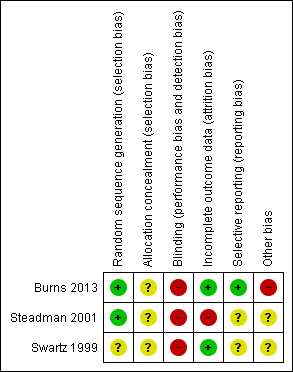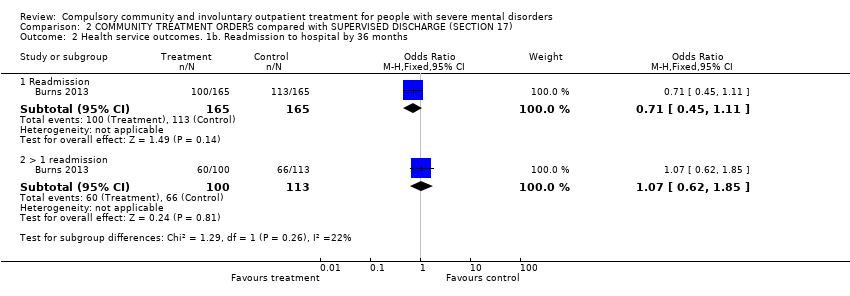Contenido relacionado
Revisiones y protocolos relacionados
Olufemi Babalola, Vahdet Gormez, Nisreen A Alwan, Paul Johnstone, Stephanie Sampson | 30 enero 2014
Darren Malone, Sarah V L Marriott, Giles Newton‐Howes, Shaeda Simmonds, Peter Tyrer | 18 julio 2007
Christopher Jones, David Hacker, Jun Xia, Alan Meaden, Claire B Irving, Sai Zhao, Jue Chen, Chunhu Shi | 20 diciembre 2018
Veronica Pitt, Dianne Lowe, Sophie Hill, Megan Prictor, Sarah E Hetrick, Rebecca Ryan, Lynda Berends | 28 marzo 2013
Marina Dieterich, Claire B Irving, Hanna Bergman, Mariam A Khokhar, Bert Park, Max Marshall | 6 enero 2017
Marcia Gibson, Hilary Thomson, Kasia Banas, Vittoria Lutje, Martin J McKee, Susan P Martin, Candida Fenton, Clare Bambra, Lyndal Bond | 26 febrero 2018
Charles S Wiysonge, Leila H Abdullahi, Valantine N Ndze, Gregory D Hussey | 11 agosto 2016
Simone Farrelly, Gill E Brown, Clare Flach, Elizabeth Barley, Richard Laugharne, Claire Henderson | 5 octubre 2013
Ghazaleh Aali, Timothy Kariotis, Farhad Shokraneh | 8 mayo 2020
Alexia Papageorgiou, Yoon K Loke, Michelle Fromage | 13 junio 2017































